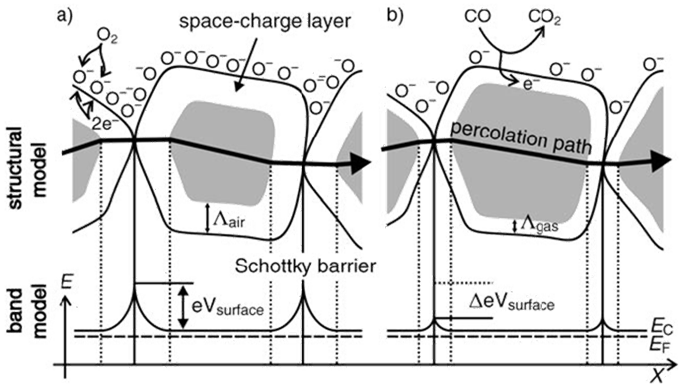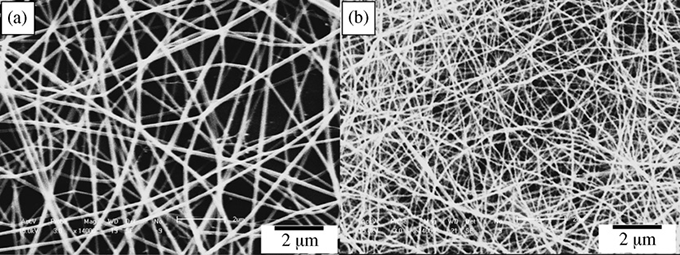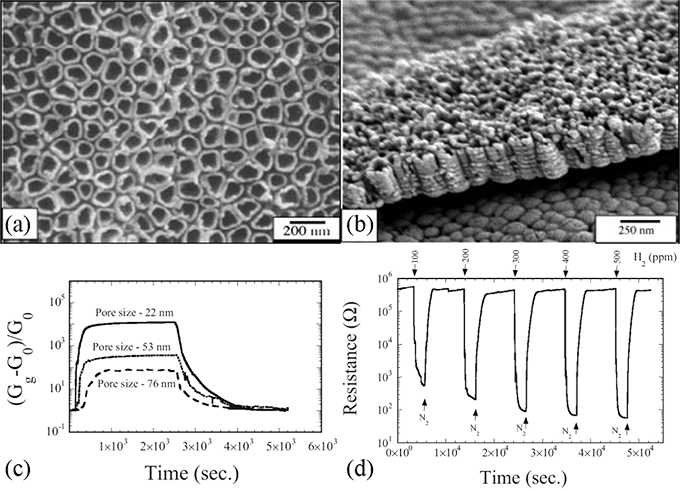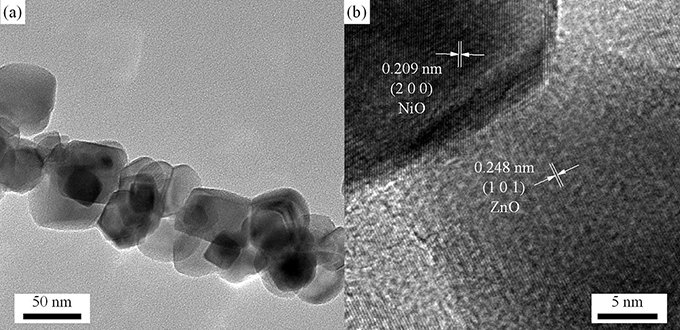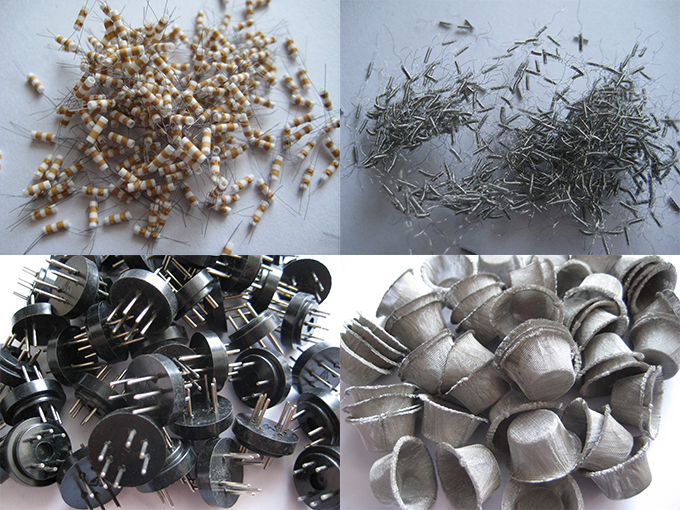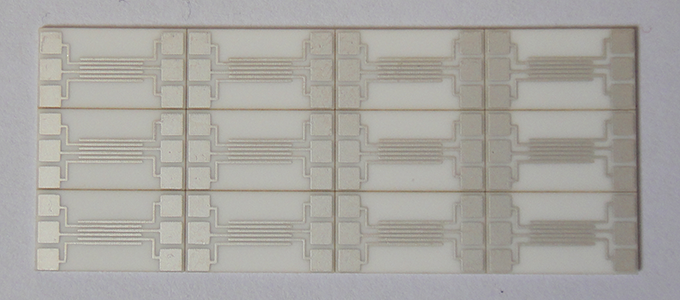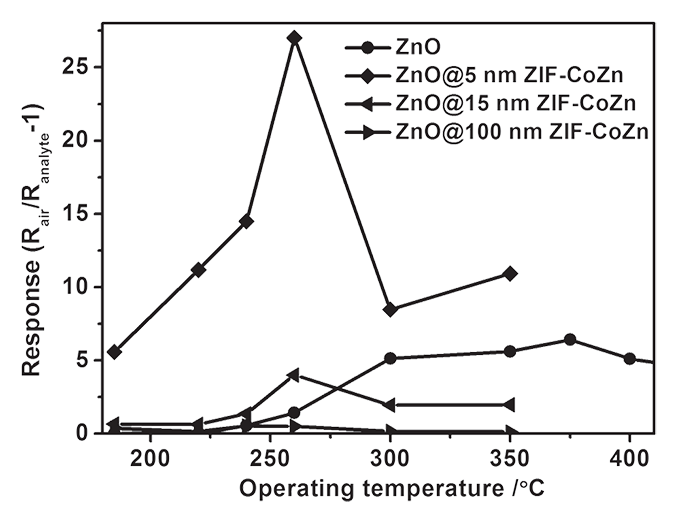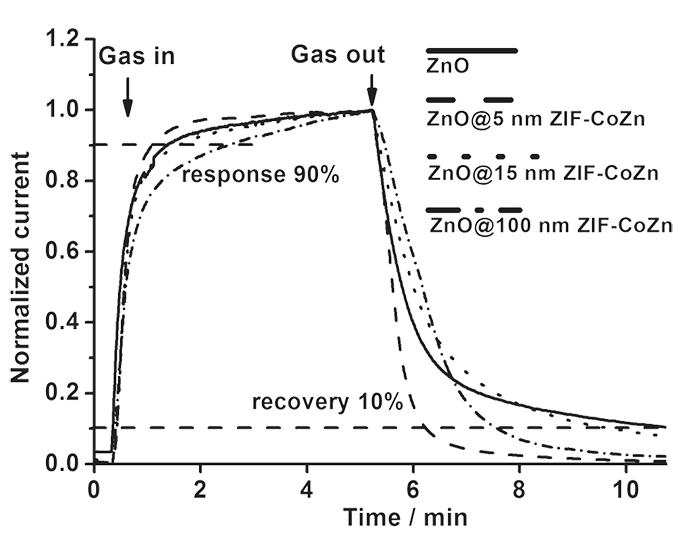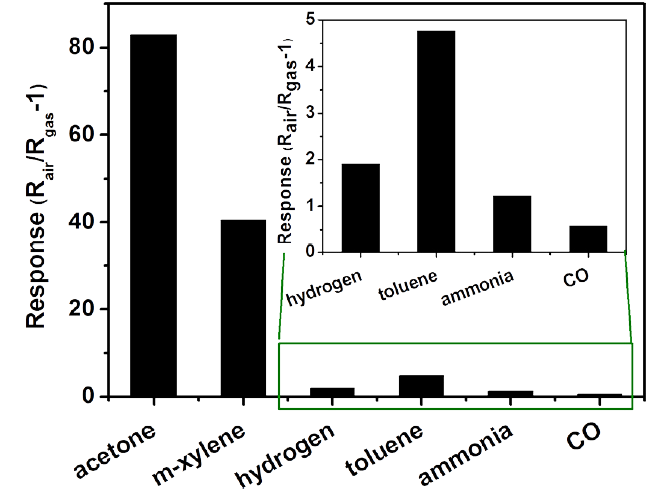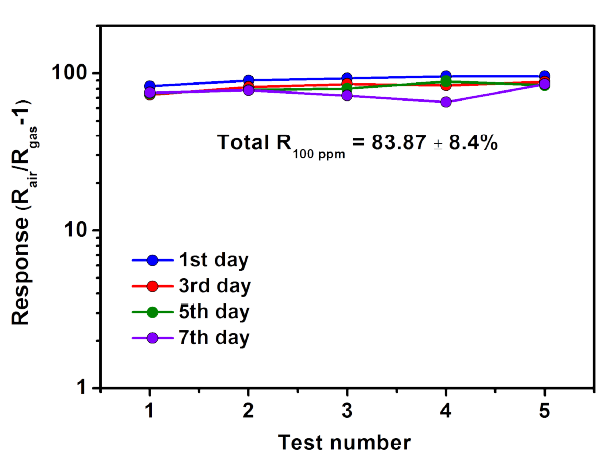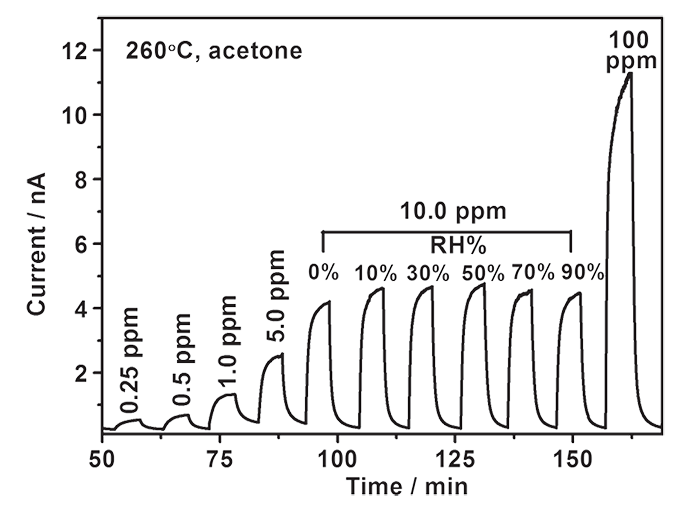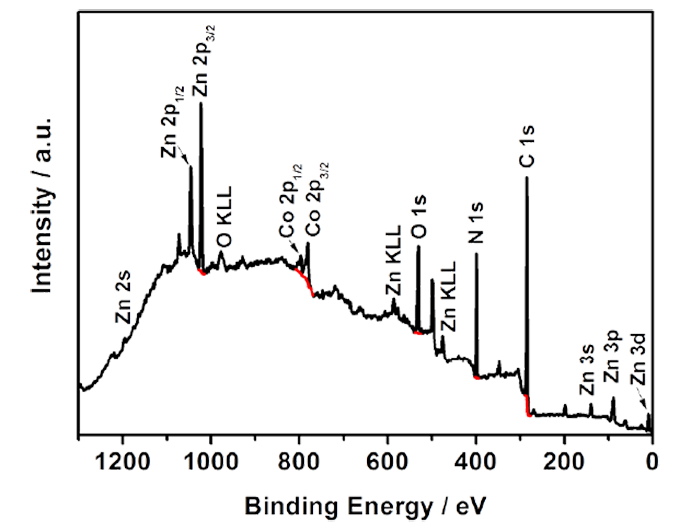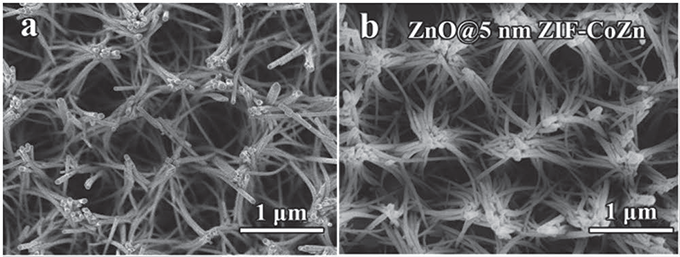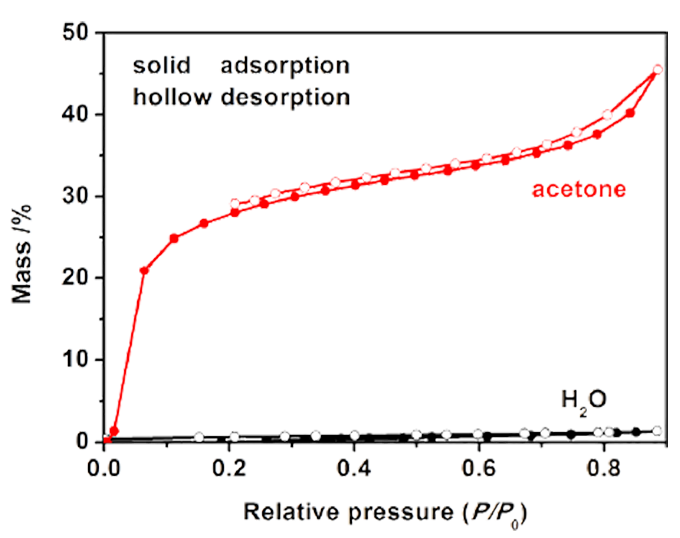Research background
Semiconductor gas sensor (MOS) has been widely concerned for its advantages of low cost, low energy consumption, convenient manufacture and use, and sensitive response for a long time. Such sensors work in response to changes in electrical conductivity before and after exposure to gas. At present, the application of MOS gas sensors in some special occasions is not mature, especially in complex operating environments, due to the complex and diverse gas composition and the performance of the sensor itself, its application is limited. In order to solve these problems, the design and development of high performance semiconductor gas sensor is still the research focus in the future. Especially in recent years with the rise of the Internet of things, the demand for sensors in the market has soared, of which gas sensors are a very important class, not only in the environmental pollution gas detection, civil gas alarm, vehicle exhaust gas detection and other traditional areas of demand, in the emerging smart home, consumer electronics, medical testing and other fields, the demand for gas sensors is also surging.
Canonical study
The research of gas sensors is divided into two categories: device research and material research. The device research focuses on multi-sensor integration (electronic nose) and micro-sensor based on semiconductor technology. The selectivity of semiconductor gas sensors is usually poor, and the practicability of sensors in complex environments can be improved by means of multi-sensor integration. The micro gas sensor is mostly based on silicon substrate, and the heating layer, insulation layer and signal layer are manufactured by semiconductor process, and then the sensitive layer is deposited to form the micro sensor.

The study of material gas sensitivity is one of the hot spots in the research of various nanomaterials and quantum materials. The traditional gas-sensitive materials are mainly particle materials, which have the disadvantages of easy agglomeration and low gas adsorption efficiency. Various gas-sensitive materials with new structure and morphology show incomparable advantages in performance compared with traditional particle materials. The most typical ones include:
1. For ultramicromaterials, when the particle diameter of the material is less than 2 times the thickness of the surface state, the sensitivity of the material will increase exponentially, and the research in this respect is mainly focused on various nanoparticles and quantum dot materials.
2. One-dimensional materials have advantages in response recovery, and the directed transmission of signals can reduce the loss rate and improve the transmission rate.
3. The pore material has large specific surface area and strong adsorption performance, and the material selectivity can be improved by adjusting the size and polarity of the pore.
4. Doping research is the basis of material research. Through the doping of various precious metals and rare metals, the sensitivity, response recovery, selectivity and moisture resistance of materials can be effectively improved.
Equipment recommendation
1. The research of gas sensors requires electrical measurement systems, atmosphere control systems, etc. Electrical systems have a variety of models available according to material and device types. Atmosphere control involves static and dynamic gas distribution, including liquid evaporation gas distribution, humidity control, etc.
a. Test system based on analysis of gas sensitive characteristics of flexible devices or materials
AES-4SD Flexible electronic Device Integrated Test Platform: Applicable to flexible materials (graphene, conductive polymers, hydrogels, liquid metals, etc.), flexible devices (sensors, detectors, batteries, capacitors, electronic skin, OLED, etc.) in the stretching, extrusion, bending and different environmental stimuli (gas, humidity, light, etc.) under the stress strain and electrical characteristics of the analysis. The platform provides precise stretching and extrusion control, as well as simultaneous electrical performance analysis and mechanical monitoring. Static valve module is configured to support liquid evaporation valve or gas dilution valve; Equipped with LED light source module, it can be used for photosensitive, photoelectric, photosensitive gas sensitive and other characteristics research; Equipped with CCD or camera to take pictures and video, real-time record the shape changes of materials and devices; It can be connected with an external humidity controllable gas-liquid distribution system, which can accurately control the atmosphere and humidity of the sealed chamber, and is used for the research of gas sensitivity, humidity sensitivity and other related characteristics.
b. Test system based on analysis of gas sensitive characteristics of planar devices or materials
CGS-MT Optoelectrical Integrated test platform: The platform is suitable for the analysis of gas sensitive characteristics of millimeter-level materials or devices. Through integrated electrical, probe, microcavity and static valve design, the platform can provide accurate electrical detection, flexible probe connection, accurate temperature regulation and convenient atmosphere control. Integrated dual-source table test system, support two-wire or four-wire test, support dual-channel test, support I-V, V-I, I-t, R-t, V-t, Id-Vg, Id-Vd and other analysis; The platform contains an in situ high temperature platform that can be used in combination with Raman spectrometer or microscope to perform spectral or microscopic in situ analysis while conducting electrical testing. The micro-chamber structure of the platform is especially suitable for connecting the humidity controllable gas-liquid distribution system, which can realize the rapid replacement and balance of the atmosphere concentration and humidity in the chamber, and can be used for the online detection of gas and humidity sensitivity. Platform support with LED light source or external light path, photosensitive, photoelectric, photosensitive gas sensitive and other related research; The platform supports the connection of vacuum pumps for performance testing under vacuum or different air pressures. In addition, the open interface reserved for the platform can be paired with an electrochemical workstation or impedance analyzer for multi-signal measurement. Therefore, the device can be used as a comprehensive test platform for in situ testing and comprehensive characteristic analysis of various millimeter-level materials or devices (sensors, detectors, transistors, etc.) that require temperature control, environment control and simultaneous electrical testing.
c. Test system for characteristic analysis of micro and nano sensors
AES-4TH Environmental controllable probe test platform: Through integrated electrical detection, microprobe connection, environmental control, microscope observation design and overall shielding, shock-proof and anti-interference processing, the platform can provide accurate electrical detection down to pA level, micrometer-level precision probe regulation, wide range of high stability of ambient humidity and hot station temperature control. The platform with a vacuum pump can support the research of device characteristics under vacuum conditions, the external light source or the built-in optical fiber can support the research of photoelectric, photoconductive, photosensitive gas sensitive and other characteristics of the device, and the humidity controllable gas-liquid distribution system can support the research of gas sensitive, humidity sensitive, humidity resistant and other characteristics of the device. In addition, the platform adopts multi-probe connection and bottom gate design, which can be used for comprehensive characteristic analysis of FET devices. The open interface reserved by the platform can be combined with an electrochemical workstation or impedance analyzer for multi-signal measurement. Therefore, AES-4TH is particularly suitable for the application environment simulation test and comprehensive characteristic analysis of micron level materials or devices (sensors, detectors, transistors, etc.).
d. Test system for resistance type gas sensor device research
CGS-8 Intelligent gas sensitive analysis system: A special analysis device for side-heated ceramic tube structure sensors, providing heating current measurement device R-t change. With each channel completely independent, resistance (Rg) measurement range wide, heating current adjustment range wide, a variety of sensitivity types optional, touch screen control, temperature and humidity real-time monitoring and other characteristics, the system through the USB interface to communicate with the computer, real-time data acquisition, and can directly analyze the sensor sensitivity and other characteristics.
e. Environmental control equipment
DGL-III Humidity control gas-liquid distribution system: suitable for the dynamic distribution of all kinds of gas sources (such as NOx, H2S, CO, etc.) or liquid sources (such as alcohols, benzene, organic amines, ethers, ketones and other volatile liquids). The humidity control module configured in the system can be used to control the humidity independently or configure various gases with different humidity. The system is composed of micro liquid evaporator, digital mass flowmeter, air mixing chamber, anti-corrosion gas path and software. Adopt automatic control, intelligent software management, support the concentration and flow of two modes of work, support the program to set the concentration of circulation valve, humidity, flow and time. Intelligent gas distribution software supports gas and liquid type setting, automatic distribution of gas flow, pipeline insulation temperature setting, liquid evaporation temperature setting, MFC zero calibration, real-time flow meter monitoring, etc.
2. Accessories consumables
a. Side-heating gas sensor accessories: used to make gas sensors based on various sensitive materials, including Au ring ceramic tubes, Ni-Cr heating wires, explosion-proof enclosures, sockets, etc.
b. Planar sensor substrate: Ag-Pd, Au electrode ceramic substrate sensor substrate, used for high temperature material performance analysis.
Typical result
Sensitivity - temperature curve: indicates the sensitivity of the material at different temperatures, usually the highest sensitivity says that the corresponding temperature is selected as the best working temperature.
Sensitivity - concentration curve: indicates at what concentration interval the material sensitivity is linear and at what concentration interval it reaches saturation. Generally, the greater the range of linearity, the better.
Response - recovery curve: indicates the rate of change of the material to the gas, from the chemical reaction to the electrical signal, the faster the response recovery, the better.
Selectivity: indicates the differential reaction of the material to different gases.
Stability: The zero-point drift and sensitivity attenuation of the material are investigated for a long time.
Humidity resistance: Measure the influence of the material on the gas sensitive characteristics under different humidity, and the working scope of the reaction device.
XPS test: indicates the adsorption state of the material surface.
SEM and TEM: Describe the material morphology and structure.
N2 adsorption desorption test: indicates the gas adsorption capacity of the material.
reference
J. Gong, Y. Li, X. Chai, Z. Hu, Y. Deng, UV-Light-Activated ZnO Fibers for Organic Gas Sensing at Room Temperature, J. Phys. Chem., 2010, 114, 1293-1298.
B. Timmer, W. Olthuis, A. Berg, Ammonia Sensors and Their Applications-A Review., Sens. Actuators B, 2005, 107, 666-677.
D.R. Kauffman, A. Star, Carbon Nanotube Gas and Vapor Sensors, Angew. Chem. Int. Ed., 2008, 47, 6550-6580.
A. Kolmakov, M. Moskovits, Chemical Sensing and Catalysis by One-Dimensional Metal-Oxide Nanostructures, Annu. Rev. Mater. Res., 2004, 34, 151-180.
J. Janata, M. Josowicz, D.M. DeVaney, Chemical Sensors, Anal. Chem., 1994, 66, 207-228.

